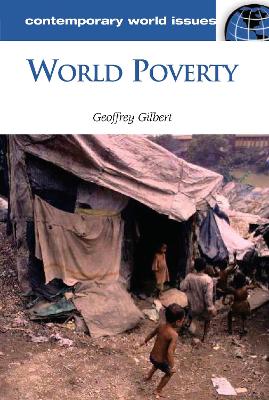Contemporary World Issues
3 total works
World Population provides the resources needed to understand the economic, demographic, and environmental issues at stake on a planet rushing toward "carrying capacity."
World Population: A Reference Handbook presents the latest facts regarding population problems and issues in countries all over the world. An overview of world population highlighting terms, demographic processes, and background information leads to a tour of world population history through census counts, plagues, famines, breakthroughs in disease control and birth control, and landmark judicial decisions.
Biographies profile people who have worked to advance our understanding of world population issues or shaped population policy, such as M. S. Swaminathan, architect of India's "Green Revolution," who contributed to the expansion of the world's food supplies. A statistical chapter provides data on everything from the birth rate in Pakistan to AIDS orphans in the Caribbean, and a fascinating discussion of global trends for 2015 makes projections about world demographics, aging patterns, migration, and food.
* Gives a chronology of events including the re-emergence of the bubonic plague in Europe in 1347, legislation such as Roe v. Wade, and movements like the one-child policy enacted in 1979 in China
* Includes 21 biographical sketches of activists such as Worldwatch founder Lester R. Brown, birth control pioneer Margaret Sanger, and legislators including He Kang, Chinese minister of agriculture
World Poverty provides an authoritative and balanced examination of the many facets of world poverty and the policy issues surrounding it.
World Poverty: A Reference Handbook provides an authoritative overview of world poverty as it stands today. Economic expert Geoffrey Gilbert offers a balanced examination of the controversies and policies surrounding world poverty and addresses such fundamental issues as the definition of poverty and the construction of indicators and indices.
In clear terms, this reference work sheds light on spatial patterns of poverty around the globe; the quality of health, food, shelter; and the commitments of the international community. Issues of special interest such as globalization, effectiveness of foreign aid, corruption, and goals for poverty reduction are presented from diverse angles. As with all volumes in the series, this essential reference includes biographical profiles, pivotal documents, and detailed listings of organizations and resources.
This work provides a thorough overview and analysis of the increasing gap between the Americans at the top and bottom of the economic scale.
Rich and Poor in America: A Reference Handbook provides an in-depth analysis of-and possible solutions for-the growing disparity between those at the top of the economic ladder and everyone else, a disparity that has reached its highest level since the 1920s.
Expertly researched and written, Rich and Poor in America explores a wide range of explanations for the trend that undercuts the U.S.'s "Land of Opportunity" image, including heavy immigration, weakening labor unions, globalization, and technological change. Separate chapters look at the issue chronologically and from a global perspective, while biographical sketches provide fascinating portraits of some of the "winners" in our winner-take-all society, as well as leading scholars and activists working on this issue.
copywriter rewrite:
Rich and Poor in America: A Reference Handbook provides an in-depth analysis of the widening income gap in the United States-a situation where, over nearly three decades, fewer and fewer Americans have made significant financial strides while more and more have seen their real incomes remain the same or decrease.
Objective, expertly researched and clearly written, Rich and Poor in America looks at a wide range of explanations for the income gap, including heavy immigration, weakening labor unions, globalization, and technological change. Separate chapters examine the trend as it has evolved over time and from a global perspective, while biographical sketches provide fascinating portraits of some of notable successful individuals as well as leading scholars and activists working on this issue.
- A selection of documents and excerpts relating to how Americans perceive the gap that exists between the haves and the have-nots, such as Andrew Carnegie's famous "Gospel of Wealth" (1889)
- An up-to-date selection of statistics, enabling the reader to get a clear, quantitative sense of the extent of income and wealth differences in contemporary America


